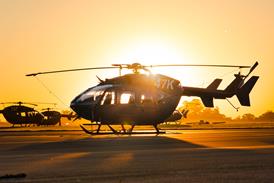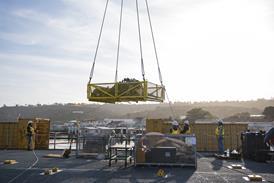A new and unsettling problem for the airlines - dubbed "air rage" by the media - has been emerging over the last few years. The problem is unsettling because it appears to be global and growing rapidly, and although the airlines can describe it, they cannot define it. This intractable issue is airline passenger behaviour on board which is variously described as unruly, offensive, disruptive, aggressive or, in the worst cases, violent. The industry as a whole is at a loss to know how to react.
The cause of this growing problem almost certainly involves a complex cock- tail of factors including, to list but a few, stress, fear of flying, social conditioning, claustrophobia, alcohol, drugs, no-smoking policies, and, finally, the effects of a combination of these factors on human physiology in a confined space at 8,000ft cabin altitude. Most people hold opinions about the causes, the most popular theory being the stressful nature of today's air travel, but in reality no-one knows the answer. There has been no scientific study of the phenomenon with a view to determining how, ideally, to prevent it and, at worst, to contain it.
Meanwhile, there is no international convention standardising the way in which the law should deal with those who have overstepped the mark. Indeed, the mark itself has not been defined. There is, in most modern democracies, no law against being unruly, disruptive or offensive unless it involves wilful damage to property, harming or endangering other people, or endangering the flight. A passenger can make life extremely unpleasant for everyone in his (or her) vicinity without committing an act for which police could, on arrival, arrest and successfully charge him or her. Besides which, with an unpleasantly disruptive passenger on board, what use is arrest on arrival to a cabin crew on a flight in the middle of the Pacific? There may be four hours to go to the destination and two to the nearest diversion. Even if restraint, in the form of handcuffing, is appropriate - which it may not be - that may not stop the offender's verbal abusiveness and the distress to other passengers on a fully booked flight. That is why the primary objective of any study should be prevention and control. A better knowledge of the subject would, however, also enable more effective specific legislation to be framed.
The symptoms of this "cabin rage" phenomenon may be primitive, but airline and regulator reaction to it must be sophisticated. Effective, long-term solutions are not going to be born out of the knee-jerk reactions which are understandable after horrific violence like the recent broken bottle attack on an Airtours stewardess.
Because of the problems of jurisdiction caused by the international nature of the aviation industry, the International Civil Aviation Organisation must provide the forum for drafting global law enforcement practices and legal standards for defining and dealing with serious cases.
In the air, a captain's legal powers are limited to protecting the safety of the aircraft and its occupants, and to maintaining "good order and discipline". Physical restraint of passengers by the crew is permitted, but the use of unreasonable force is not, and they do not have powers of arrest.
Meanwhile, the more prosperous aviating nations must provide the means for a scientific study of passenger behaviour. Aviation authorities who believe that this is an issue for the police and the courts are correct only in the sense that, once the miscreant is on the ground, some cases (not all) become the duty of the law enforcement agencies. Since, however, this is increasingly a matter of passenger and crew safety and, in extremis, aircraft safety, the aviation authorities must take the co ordinating role in the efforts to find a solution.
Finally, the airlines - and airports - have a big responsibility because the passengers, good and bad, are theirs, and the worst effect of most events is that they wreck the quality of the journey for the well-behaved. In 1996, Pierre Jeanniot, chief of the International Air Transport Association, identified passenger processing, especially at airports, as a serious problem for the future if the quality of air travel is to be maintained. Airports and airlines look after the passengers. Perhaps they need to learn more about what makes them tick.
Source: Flight International























